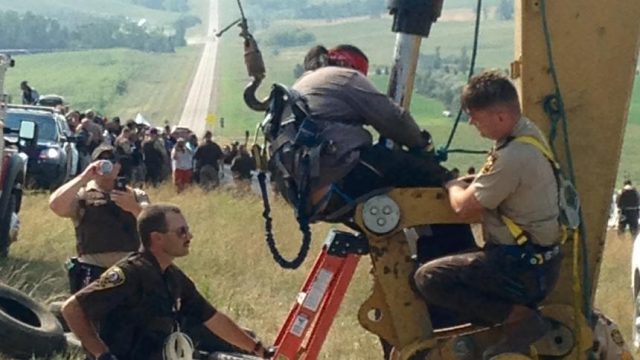Standing Rock Drinking Water Intake at Heart of #NoDAPL Protests Is Scheduled to Be Shut Down


Protesters looking to obstruct the construction of the Dakota Access Pipeline project have used, as justification, their desire to protect the tribe’s water source. It has been frequently reported that the pipeline, which skirts just north of the Standing Rock Indian Reservation, crosses the Missouri River just upstream from where the tribe draws its drinking water from the Missouri River.
But what hasn’t been reported anywhere, as far as I’ve seen, is that by the end of the year the Missouri River intake serving the Standing Rock tribal community will be at Mobridge, SD, approximately 45 miles south of the current intake at Fort Yates and roughly 70 miles south of the Dakota Access Pipeline crossing.
If all goes according to plans currently in place, the Fort Yates intake which has been so frequently cited by those opposed to the Dakota Access Pipeline will be shut down by the end of the year.
I spoke with Dave Rosencranz, the Dakotas Area manger for the Federal Bureau of Reclamation, and he told me that currently the Standing Rock community is being served by two Missouri River water intakes but that the Fort Yates intake, which is nearest the Dakota Access Pipeline crossing, is slated to be shut down.
“There’s been a lot of issues with that intake,” Rosencranz told me, referring to the Fort Yates facility. “It’s just time to replace it. It’s basically at the end of its life.”
I also spoke with Bureau of Reclamation engineer Tom Thompson who said that the Fort Yates intake and water treatment facility was built in the 1960’s and would “cost more more than it’s worth” to fix it. He told me the Mobridge intake and treatment plant are already operating and serving a part of the Standing Rock community, but will hopefully soon be serving all of it.
Thompson said that a pipeline from the Mobridge facility currently ends at the North Dakota/South Dakota state line, but there are plans to finish it soon. “Hopefully that will be done by the end of the year,” he said, adding that completion hinges on the weather.
Once the pipeline is complete, the Fort Yates intake will be shut down.
Thompson also stressed that this project has been in the works for more than a decade, and was prompted by more than just the age of the Fort Yates facility.
Back in 2002 serious drought conditions lowered water levels in the Missouri River system to the point where the Fort Yates intake had problems. He said that the Mobridge intake was much deeper than the one Fort Yates and would be more resilient during droughts.
“If that one goes dry it means we’ve got bigger problems because the Missouri River will have run dry,” he told me.
Thompson said the Dakota Access Pipeline and the controversy surrounding has not at any time been a factor in this project.




